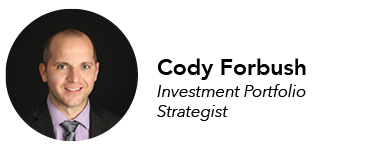The world of investing in the market can often be a confusing place. Many times it comes at the cost of trust. Trust in friends and family, trust in a financial advisor, and trust in the financial media. As human beings, we have been conditioned to place our trust in individuals who believe and think the same way we do. In finance classes, it is taught that the stock market measures the value of companies. Throughout life, we have been taught that in order to get a bigger return, it comes at the price of taking a larger risk. Is our conditioning really accurate? Do we have to take on more risk to get more return?
When considering risk, many investors are left asking themselves, “How much risk needs to be taken to get me to my goals? To answer this question, let me tell you of a time a friend and I decided it would be a good idea to run a half-marathon. My friend trained quite well and prepared well in advance for the big day. I on the other hand, didn’t think training was necessary. We both showed up on race day, and both of us felt ready to compete. Through three miles we were both doing great. Five miles into the race, I started to feel some pain in my knee. I told my friend to keep running, I was just going to walk for a block or two, then I would catch up to him. After my two block walk, I sprinted to catch-up, but never could find him. My sprint lasted about a quarter of mile before I was out of breath and had to walk again. Then I sprinted again and then walked, never being able to catch up to my friend. In fact, I noticed that overall, I was falling further and further in the back of the race. Each time I stopped, I essentially was losing ground. My friend on the other hand, was well prepared, kept a steady pace and kept going through the race. He finished in a great spot!
The story of my half marathon experience is very similar to investing. The faster we run, the more risk we are taking on. It becomes difficult to maintain that level of risk for such a long time period. Consistency is key to long-term investing. At the end of the day, we don’t want to lose ground. The best way to avoid that is to maintain an appropriate amount of risk over the course of investing. Fail to do so, and we may very well end up short of our financial goal (and with a sore knee).
Let’s move on to the other part of the risk question. Do we really need to take on more risk to get more return? The answer to this question really comes down to a deeper level of understanding of how investments interact with each other. If we invest the traditional way in strictly stocks and bonds, history suggests that we would have to take on more risk to get more return.
Through modern investing solutions, there are ways a portfolio can be constructed to take on less risk and keep the same return, but the general rule is more risk brings more return. However, the investment environment today is comprised of much more than stocks and bonds alone. If we think outside the traditional approach of investing using only stocks and bonds and begin including alternative investments an investor can take substantially less risk and get more return. Alternatives can be a catch all category for non-traditional asset classes. The key concept of the alternative asset class is to diversify away from the traditional asset classes. If the markets are at an all-time high and have nowhere to go but down (this is a tough one to bet against, long term) and interest rates are going up and causing bond prices to go down, alternatives can add both defense and offense to an investor’s portfolio. If the markets continue to go up and interest rates stabilize, alternatives can help reduce risk and enhance return. Considering that we are currently in an environment where stock valuations are high and interest rates are rising, the case for including alternatives into a portfolio is even more compelling.
If we are investing in a traditional sense, let us challenge ourselves as a society to take a look and see if we are truly diversified. Do we really have to take on more risk to get more return? If we are invested in a traditional stock and bond allocation approach, then generally the answer is “no”. By adding the correct alternatives to our portfolio will help reduce our risk, without sacrificing the return.
Cody will be onsite at The Bank of Tioga quarterly beginning in June. He will be taking appointments June 11-13, 2018. If you would like to schedule an appointment with him, please call the bank at 701-664-3388 (and ask to setup an appointment with Cody Forbush) or call him directly at 712.487.0369.
About TS Prosperity Group: We want to be your partner in creating a plan that secures and empowers your financial prosperity, while giving you the ability to care for your family today and for generations to come. Contact TS Prosperity Group today by calling 844-487-3115 to schedule your prosperity planning meeting.

Cody joined TS Prosperity Group in 2017. As an Investment Portfolio Strategist, Cody sits on the Investment Committee and helps with the research, investment recommendations, and portfolio construction. His role also includes taking the message from the Investment Committee and delivering it to the client in a way that makes sense. Cody comes from a rural farming community in Idaho. He earned a Bachelor’s degree in Business Administration with an emphasis in Investment Science and Portfolio management from the University of Nebraska at Omaha (UNO). He also completed a MBA degree from UNO with an emphasis in Risk Management. Cody is currently studying for level II in the CFA program. His work experience includes assisting high net worth clients plan around their goals, and developing an all-encompassing strategy to help accomplish those goals.
TS Prosperity Group is an affiliate of The Bank of Tioga.
Investment products are
• Not a Deposit • Not FDIC Insured • Not Insured by any Federal Government Agency
• Not Guaranteed by the Bank • May Go Down in Value

